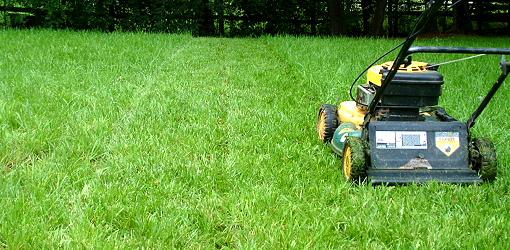In this weekend’s column, I discuss how to get your lawn summer ready. I have listed six tips on getting the very best out of your lawn and getting it looking ship shape for the year ahead.
Scarification
This is a method of removing the thatch layer in your lawn. The thatch is made up of decomposed or semi-decomposed organic matter. This includes uncollected grass clippings and leaves among others. This is where a build-up of moss can occur. By removing a percentage of this, it helps to allow the rain to percolate down through this area quicker reducing damp conditions. As well as improving airflow through grass sward helping to reduce diseases. It also helps encourage the spread of more vulnerable grass varieties to regenerate.
Regeneration
Your lawn encompasses at least a half dozen grass varieties and weeds. Obviously, over time the more vulnerable varieties and less competitive ones will lose out. This can be key to the overall appearance and the ecology of your lawn. Renown or stitching in seed on a biannual basis can greatly benefit your lawn.
Watering
As you can imagine grass varieties are shallow rooting. They have a fibrous root system that spreads out just below the surface of the soil. Long periods of dry weather can have ill effects on your lawn. We can still see some damage to lawns from last year’s drought spell. So give it a watering during periods of dry spells will help keep it alive.
Mowing
Regularly mowing will increase the density of the grass. Basically what happens is the individual grass plants panic and stress out after mowing. They then respond by shooting out stolons i.e baby grass plants. These new grass plants then grow up and thicken the overall lawn. It also helps create more competition helping to fight out weed problems
Feed
At the end of the day grass are plants and plants like us require food to thrive. Regularly feeding your lawn with either a specialised soluble or solid feed will see a vast improvement. A soluble feed will act quicker but last shorter as for a solid feed will respond slower but be available for a greater length of time. A specialised lawn feed will have all the correct nutrients.
pH
This is a measurement of how alkaline or acidic your soil is. This can impact the nutrients available to your grass and what they will be able to take up. Also, certain grass varieties and weeds will tolerate various pH readings.
Ideally, a pH at around 6.5 will be sufficient, this is slightly on the acidic side. Liming will help alleviate the problem of soil been too acidic. Lime is a natural rock material that is alkaline. Acidic based feeds will help alleviate the problem of soil been too alkaline.
If you would like to arrange a consultation and for further information visit my website conorgallinagh.com.
I have a number of gardening events coming up over the next few weeks and information on these are available on my Facebook page – Conor Gallinagh – Horticulture Consultant. https://www.facebook.com/conorgallinaghhorticulture/
Happy Gardening!!








